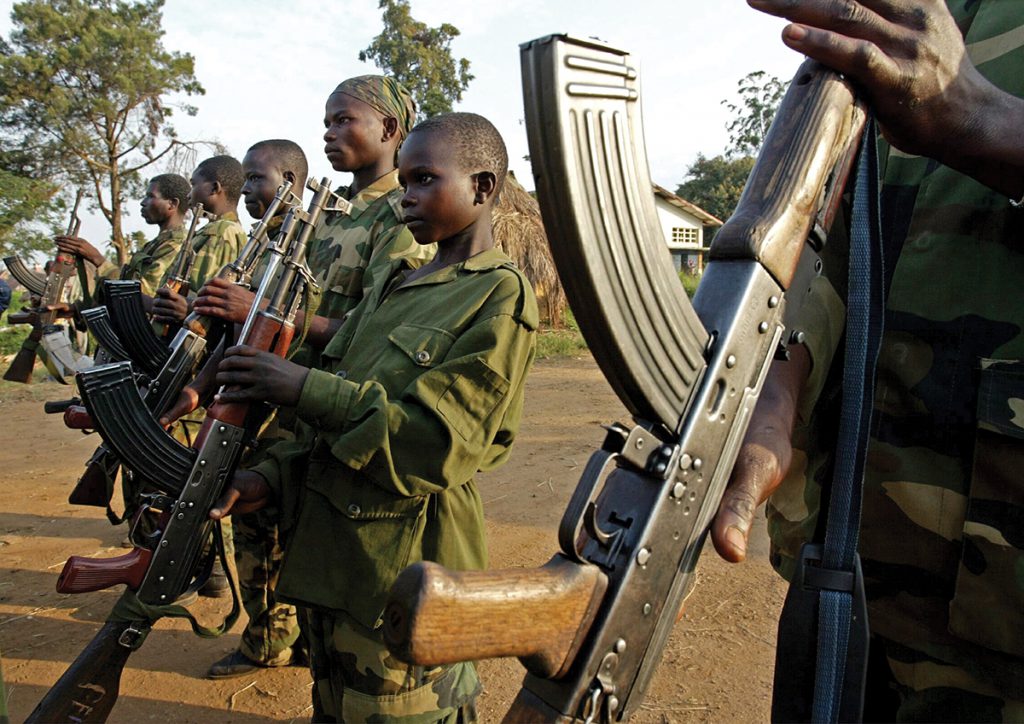
Saudi Arabia allegedly offered approximately $10,000 to families in Darfur, Sudan if their sons joined the Saudi-led intervention in Yemen, the New York Times reported on December 28th.
According to the report, as many as 14,000 Sudanese militiamen have been fighting in Yemen in tandem with the local militia aligned with the Saudis, according to several Sudanese fighters who have returned and Sudanese lawmakers who are attempting to track it.
Almost all of these Sudanese fighters, many of which children come from Darfur, where around 300,000 people were killed and 1.2 million displaced during a dozen years of conflict over diminishing arable land and other scarce resources.
The newspaper quoted the 16-year-old Hager Shomo Ahmed who said that “Families know that the only way their lives will change is if their sons join the war and bring them back the money.” He was only 14 when the offer was made to his family.
The report also quoted Hafiz Ismail Mohammed, a critic of Sudan’s government and former banker, saying: “People are desperate. They are fighting in Yemen because they know that in Sudan they don’t have a future.”
“We are exporting soldiers to fight like they are a commodity we are exchanging for foreign currency,” Mohammed said.
The NYT further reported the method at which they were commanded:
“To keep a safe distance from the battle lines, their Saudi or Emirati overseers commanded the Sudanese fighters almost exclusively by remote control, directing them to attack or retreat through radio headsets and GPS systems provided to the Sudanese officers in charge of each unit, the fighters all said.”
“The Saudis told us what to do through the telephones and devices,” said Mohamed Suleiman al-Fadil, a 28-year-old member of the Bani Hussein tribe who returned from Yemen at the end of last year.
“The Saudis would give us a phone call and then pull back,” agreed Ahmed, 25, a member of the Awlad Zeid tribe who fought near Hudaydah this year, he didn’t want his entire name published due to fears of government punishment.
According to the NYT, the Pakistani military also has about 1,000 soldiers to bolster the Saudi-led coalition, despite the country’s parliament voting to block its participation.
“Saudi officials said their soldiers have also died in Yemen, but declined to disclose how many.
The Sudanese ground troops unquestionably have made it easier for the Saudis and Emiratis to extend the war.
The Sudanese have insulated the Saudis and Emiratis from the casualties that might test the patience of families at home,” the NYT reported.
The Sudanese fighters also insisted that they were the main barrier against the Houthi, safeguarding the Kingdom.
“Without us, the Houthis would take all of Saudi Arabia, including Mecca,” the 28-year-old Mohmed Suleiman al-Fadil said.
“Sudan’s defense minister threatened last May to withdraw from the conflict, pointedly announcing that Khartoum was ‘Reassessing’ participation in light of Sudan’s ‘Stability and interests.’ Diplomats called the statement a veiled demand that Saudi Arabia and the United Arab Emirates provide more financial assistance.”
Furthermore, until recently Saudi Arabia and the UAE have reportedly been wary of Sudanese President Omar al-Bashir, due to his ties to political Islam and relations with Iran and Qatar.
“The war in Yemen has enabled Mr. Bashir to win at least diplomatic support from its Gulf leaders, and he has thanked the Saudis and Emiratis for pressing Washington to upgrade relations.
The Saudi payments to the soldiers have become increasingly significant to Sudan, where inflation has hit 70 percent and even in the capital residents line up for bread, fuel and bank withdrawals.”
The system worked the following way, according to accounts to the five fighters who have returned from Yemen and two brothers of fighters who had died in the intervention.
“Sudanese jets departed Khartoum or Nyala, Darfur, carrying 2,000 to 3,000 soldiers at a time to Saudi Arabia.
The Saudis issued them uniforms and weapons, which the Sudanese fighters believed were American made.
Then Saudi officers provided two to four weeks of training, mainly in assembling and cleaning their guns.
They were paid in Saudi riyals, the equivalent of about $480 a month for a 14-year-old novice to about $530 a month for an experienced Janjaweed officer.
Their payments were deposited directly into the Faisal Islamic Bank of Sudan, partly owned by Saudis.
At the end of a six-month rotation, each fighter also received a one-time payment of at least 700,000 Sudanese pounds – roughly $10,000 at the current official exchange rate.”
Ahmed, of the Awlad Zeid tribe recalled that Sudanese officers warned the new recruits:
“Don’t fight harder than the money is worth, don’t fight more than you are paid for.”
RT cited a Saudi military spokesman who denied the government is recruiting children.
“Sudanese Foreign Ministry spokesman Babikir Elsiddig Elamin was more circumspect in his denial, merely commenting that Sudan was fighting “in the interest of regional peace and stability,” RT wrote.
Regardless if whether the reports of Sudanese children are fighting in Yemen, more than 85,000 local children are estimated to have been killed of famine and starvation due to the Saudi-led coalition’s intervention.
Currently, the humanitarian crisis in Yemen is the worst in the world, according to the UN. Efforts are on-going on finding a peaceful solution, with recent talks between the Houthi, the Saudi-led coalition and their proxy government in Yemen reportedly bringing success. Despite that reports of fighter and civilian casualties and attacks from both sides keep surfacing.

